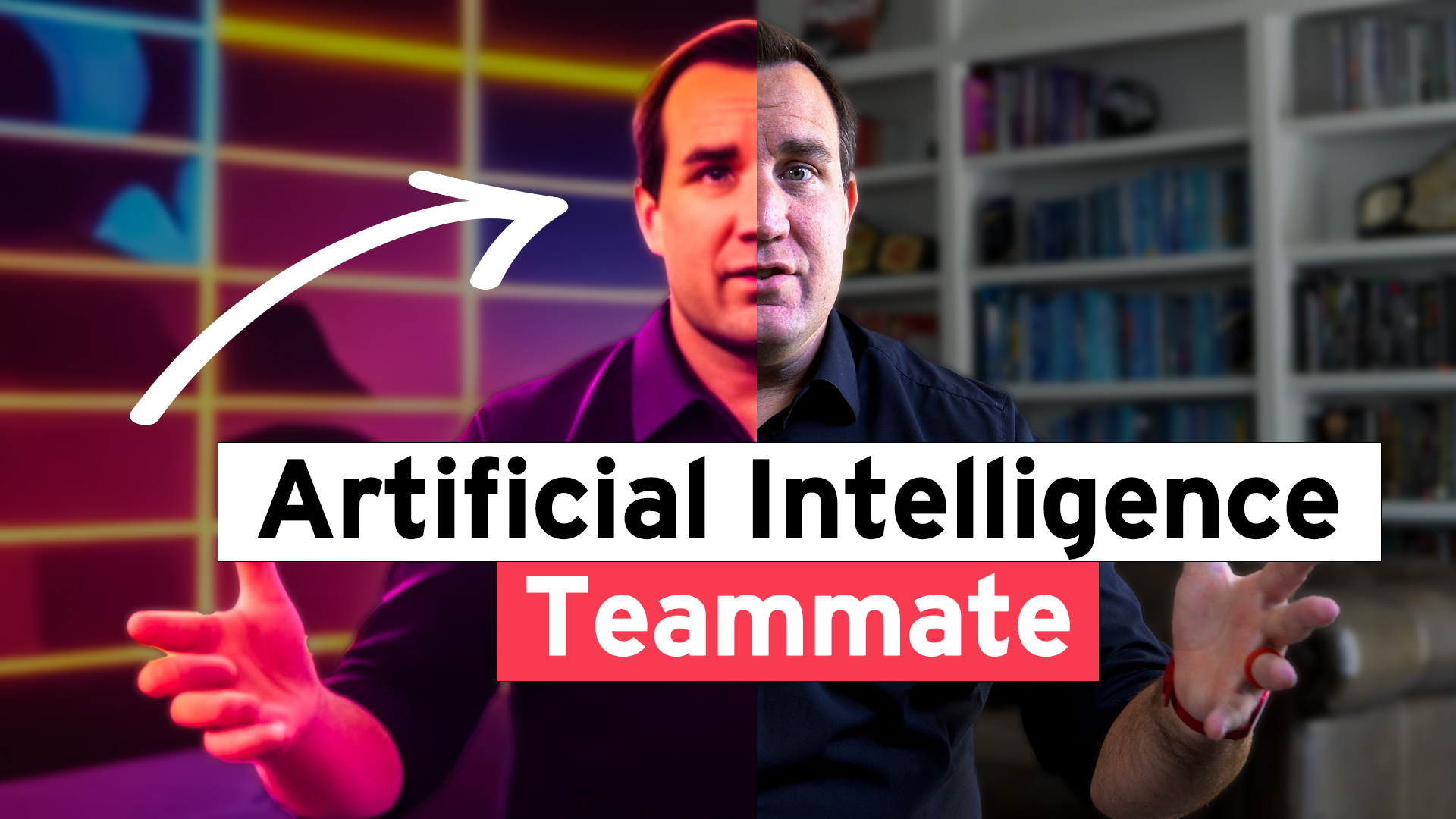
Over the past year, leaders have been asking the same questions trying to leverage AI-Powered teamwork: “What should I be doing with ChatGPT?” “How should we be rolling this out to our team?” “What does this mean for the future of work?”
They’re important questions—but they all kind of miss the mark. Because they treat AI like it’s just another IT rollout. Like that time your company moved from email to Slack. Or when everyone was forced to learn a new payroll system. But AI isn’t just another piece of software.
AI isn’t a tool. AI is a teammate.
And until we start treating it that way, we’re going to keep missing the real opportunity.
Why “Tool Thinking” Falls Short
Most people respond to AI in one of three ways. They see it as a threat. They see it as a tool. Or they see it as a teammate.
If you see AI as a threat, you’re going to hesitate. And hesitation is the enemy of progress. You’ll wait. You’ll hold back. But AI isn’t slowing down. And the people who do embrace it—whether they’re colleagues in your department or competitors across the industry—are only going to get better, faster, and more efficient. That puts your performance at risk by comparison. Compared to those using AI, you will performer slower.
If you see AI as a tool, you’re on slightly better footing. You’ll look for ways to automate the repetitive stuff. Email summaries. Meeting notes. Draft responses. All helpful. All productive. But you’re still missing the big value. You’re simplifying, not improving. You’re staying in neutral.
But if you treat AI as a teammate—that’s where transformation starts.
That’s when AI becomes a collaborator. A partner in decision-making. A quiet force that helps your team think more clearly, solve problems faster, and deliver better outcomes.
That’s when you start to unlock the full potential of AI-powered teamwork. That’s when it truly makes you smarter.
Step One: From Slower to Simpler
The first mindset shift is from threat to tool. From slower to simpler. Think about the annoying parts of your job. The copy-paste chores. The tedious admin. The stuff you’re way too smart to be wasting time on. AI can take that off your plate today.
Summarize the endless email chain. Done. Draft that status report. Done. Transcribe your meeting and highlight key action items. Double done.
Not sure where to start? Try this: open whatever AI platform you prefer—ChatGPT, Claude, doesn’t matter—and type:
“Here’s what I do in my job every day. Ask me questions to understand it better, then show me how you could help.”
It will ask follow-ups. It will start mapping your workflows. It will suggest ways to make your day easier, your output faster, and your mind a little clearer.
Congratulations—you’ve moved from slower to simpler.
Step Two: From Simpler to Smarter
Once you’re using AI to simplify tasks, it’s time to use it to sharpen your thinking. Because smarter teams don’t just offload work. They upgrade their decision-making. They collaborate with AI—not just delegate to it.
How? Try turning AI into a devil’s advocate. Feed it your current strategy or plan, then ask:
“Tell me why this could fail.”
You’re not asking it to make decisions. You’re using it to challenge assumptions. To highlight blind spots. To play the role of critic—without the ego. AI provides friction without awkwardness. No one gets defensive when a bot questions your logic.
Want to go deeper? Try these prompts:
- “What are we overlooking?”
- “What assumptions might not be true?”
- “Give me three stronger alternatives to this approach.”
Want to make the feedback even more useful? Ask the AI to role-play:
- “Think like a strategic consultant.”
- “Respond like a customer.”
- “What would a competitor say?”
This is how AI-powered teamwork gets smarter—not just simpler. You’re not just getting a second opinion. You’re getting sharper thinking, without the politics.
Step Three: Make It a Team Habit
And here’s where the real breakthrough happens: when AI becomes a shared part of your team’s workflow—not just your personal productivity hack.
Use it in meetings to take notes. To draft action items. To highlight decisions made.
But also—use it before meetings. Drop your agenda into the chatbot and ask what you’re missing. Run your strategy plan through it and ask for feedback before your next off-site.
This only works if the whole team adopts it. And that’s where leaders come in.
Leaders need to be intentional. Because while AI can streamline collaboration, it can also introduce risks. If team members outsource their attention to a bot, they may stop listening. If everything’s recorded, people may speak up less. The quiet voices might go even quieter.
That’s why leadership still matters.
Psychological safety? Still your job.
Empathy? Still your job.
Motivation and morale? Still your job.
AI can’t do that for you. But what it can do is give you more time to focus on it. Because when the bots handle the mechanics, you can focus on the human side of leadership—the part that never gets automated.
The Future of AI-Powered Teamwork
So, where’s your team right now? Are you stuck in “slower,” resisting change? Are you in “simpler,” just automating inbox chores? Or are you starting to work “smarter,” using AI to enhance how your team thinks and collaborates?
Wherever you are—there’s room to grow. Don’t just ask what AI can do. Ask how your team can do better work with it. Try a prompt. Test an idea. Challenge a plan. Start treating AI like a teammate, not a tool. Because the future of AI-powered teamwork isn’t about tech. It’s about trust. It’s about how you use new capabilities to build better teams, make better decisions, and do work that actually matters.
And that’s something worth getting smarter about.

About the author
David Burkus is an organizational psychologist, keynote speaker, and bestselling author of five books on leadership and teamwork.